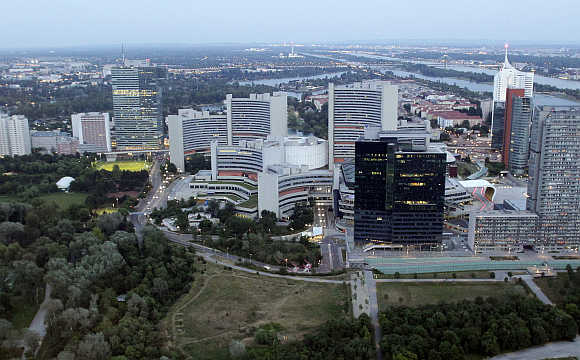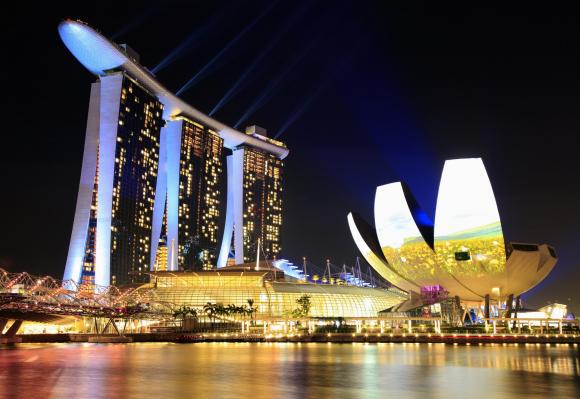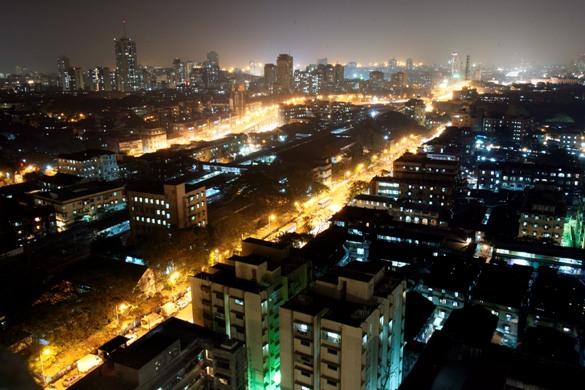 | « Back to article | Print this article |
Why ranking cities is important
Urban India is a huge combination of a complex mix of situations.
Our country is urbanising swiftly.
We now have close to 8,000 cities and towns, including 'census towns'.
We all know each one of these has its own characteristics, in terms of liveability -- what it offers and what its strengths or weaknesses are.
So what makes our cities worth living in? What broad parameters would characterise liveability in various towns?
Just basics, like enough water available in our houses every day?
Garbage getting collected and disposed of regularly?
Movement within the city smooth, the ability to own or rent a decent house?
Click NEXT to read further. . .
Why ranking cities is important
Civic offices and systems comfortable to deal with; educational institutions and health facilities plentiful and satisfactory, daily provisions available within walking distance, and so on?
Or is it also that along with all these, good entertainment facilities, green spaces and parks, 24-hour supply of water and electricity and such things which matter more to affluent sections should be the indicators?
Of course, the yardsticks vary for different sections of society: because, for a slum-dweller -- and Mumbai has more than 55 per cent of its population living in slums -- it is the basics which matter, whereas for a middle-class family, the criteria would be entirely different.
Click NEXT to read further. . .
Why ranking cities is important
Urban India is a huge combination of a complex mix of situations.
As many as 7,935 cities and towns, 53 of them with population of a million or more; 3,894 towns are census towns, meaning, technically, they continue to be rural bodies but they have various urban characteristics.
Of the urban population, 28 per cent does not have a water connection within their premises; water availability across cities and towns per day is only 2.9 hours.
Also, 30-50 per cent of households do not have sewerage connections; 18 per cent of urban households do not have access to latrines.
While there may not be a single, commonly acceptable way to rank cities, it is worthwhile looking at some interesting indices.
Click NEXT to read further. . .
Why ranking cities is important
Mercer, the human-resources consulting firm, recently analysed living conditions in cities according to 39 factors, worked out basically to compensate employees of multinational companies when they are located in different cities of the world.
Vienna tops the list of 221 cities, followed by Zurich and Auckland.
The first Indian city to figure in the list is Bengaluru at 139th position, followed by New Delhi at 143, Mumbai at 146, Chennai at 150 and Kolkata at 151.
But when city infrastructure was ranked for 2012 by the same system covering electricity supply, water availability, telephone and mail services, public transportation, traffic congestion and the range of international flights from local airports, Mumbai is at 134th position, Kolkata at 141, New Delhi at 153, Chennai at 168 and Bengaluru at 170.
Click NEXT to read further. . .
Why ranking cities is important
Vienna, which topped the overall quality-of-living ranking, was 16th in terms of city infrastructure ranking -- a list topped by Singapore.
While 15 European cities dominate the top-25 rankings on the basis of quality of living, the only Asian city which could figure in this -- that too at the 25th position -- was Singapore.
When Monocle ranked the most liveable 25 cities of the world on the basis of quality of life, based on indicators such as crime, health care, state-funded education, business climate, public transport, unemployment rate, cultural activities and so on, Zurich topped a list again dominated by European cities.
Tokyo was seventh and Singapore 15th.
Click NEXT to read further. . .
Why ranking cities is important
The recent UN Habitat report on the state of the world's cities came out with a novel concept, the city prosperity index.
It divided urban prosperity into five dimensions: productivity, infrastructure (including housing), quality of life (including education, health and public space), equity and environmental sustainability.
Cities with very solid prosperity factors are scored at 0.9 and above, with all five factors well developed.
Good governance, urban planning, laws, regulations and institutional frameworks ensure that no particular dimension of prosperity gains, to the detriment of any other.
Vienna again figures at the top, with Oslo and Copenhagen following.
Click NEXT to read further. . .
Why ranking cities is important
While Vienna's CPI is 0.925, the first Indian city which figures in the list is Mumbai at position 44 with a CPI of 0.694.
Our cities today are neither equipped nor have the capability, resources or the power to look at their problems holistically.
Added to this is the fact that citizens' voice does not matter and tools like ICT or practical concepts like service-level benchmarks do not even manage to attain reasonable level of prominence in our city governance scheme.
One clear indicator from all these studies is the need for a proper system of continuously assessing where our cities stand with regard to a reasonably representative set of parameters and how improvements can be made.
Click NEXT to read further. . .
Why ranking cities is important
When India Today listed India's 30 best cities, Chennai ranked on top on the basis of a group of overall parameters.
Parameters like housing and transport, entertainment, education, environment, crime and safety, public service, health care, economy and investment saw different cities becoming the best -- except that Chennai and Shimla figured at the top in two categories.
Earlier, an opinion poll by Outlook-Club Mahindra found that Jaipur was the city with the highest proportion of happy people, and close to one-fourth of urban citizens felt that government is most responsible for their unhappiness.
An NCAER/Future Capital research study found that Ahmedabad registered the fastest income growth.
Click NEXT to read further. . .
Why ranking cities is important
A Times of India-IMRB quality of life survey found that of the five million-plus population cities, Ahmedabad was the best to live in, but Hyderabad topped the list when it came to peace of mind.
Very recently, the NGO Janaagraha did its annual survey of Indian cities on criteria such as urban planning, urban capacities, empowered political representation and transparency. Kolkata, Delhi, Jaipur and Hyderabad respectively topped the four categories -- but, when it came to citizens' voice, it was Surat which topped the list.
While these different approaches to rating give us some idea about which city ranks where, what should also become more relevant is to know where our cities stand when benchmarked internationally with similar cities on common parameters.
The author is former secretary, urban development









